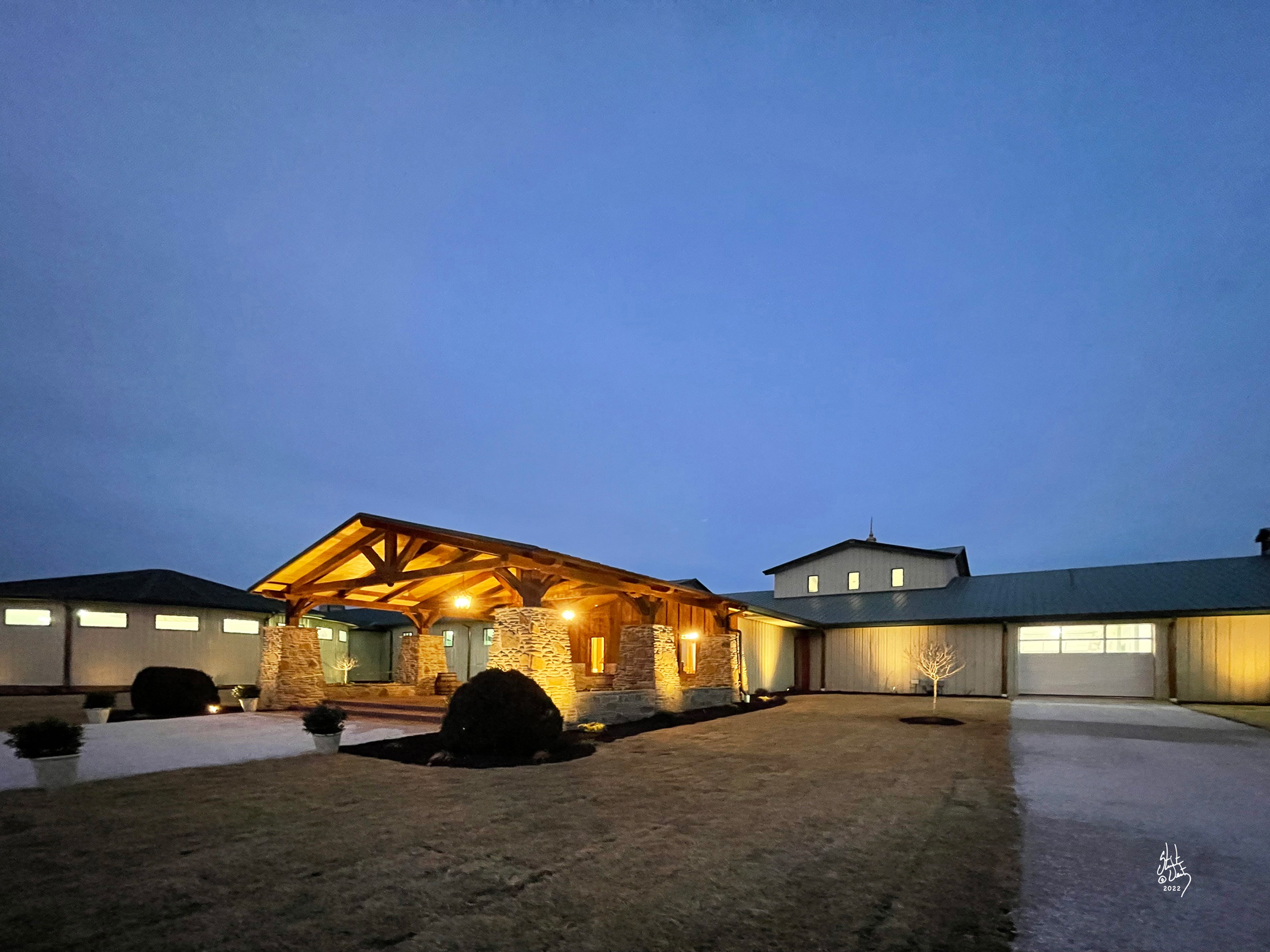Barn Planning Tips from Sterling Equine
A healthy barn will be free of excess moisture, well lit with natural light, and have excellent air flow. These and other useful tips and tricks to building your dream barn will be addressed in this article by the team at Sterling Equine.
With over three decades and thousands of projects ranging in size from single stall barns designed specifically for your special equine partner to grand facilities focused on safety, function, and elegance; Sterling Equine has the experience and knowledge needed to help your dreams become a reality.
Site Selection and Layout
New builds will require some thought on site location. It is imperative to select a site with good soil drainage and important to think about utility and road accessibility. Before finalizing designs, make it a priority to identify the prevailing wind direction on the site and plan to build accordingly (preferably at a 45-degree angle if possible). This will prevent the center aisle of your barn from becoming a wind tunnel. When it comes to keeping your barn looking as beautiful as it is in your imagination, pay attention to placement of less attractive features, such as manure bins. Keeping them away from the main entrance, main roads, and residential houses will decrease eyesores and increase envy! Delivery entries and areas should also be in less visible locations and away from equine traffic to minimize potential hazards. Once you have found the perfect site you can start planning the perfect barn that fits your needs!
Planning for the Future
One of the most common regrets we hear when building a barn is not planning for the future size of the operation. Many plan their barn to accommodate what they currently have and do not take into account where they want to be in years to come. Critically assessing your goals and potential growth can help you save money in the long run. It is more cost effective to build a bigger barn now rather than add on to it later. Save costs instead by holding off on interior stalls that will sit dormant at first and add them as you grow.
Plan for your horses’ comfort and save on equine health and cost of repairs. We too often see barns with narrow aisles and small stalls that make everyday life in the barn a challenge. For best comfort build stalls a minimum of 12’ x 12’ for horses up to 16hh and 12’ x 14’ or 14’ x 14’ for large warmbloods and draft breeds. Aisles should be a minimum of 12’ wide, but 14’ is best for long aisles with lots of barn traffic and larger breeds. This will give you more clearance for equipment making it easier to navigate and potentially reducing cost of repairs from equipment damages. Larger horses will appreciate the extra space as well, making it easier for them to turn around and maneuver in the aisleway.
Design/Layout
When it comes to barn design and layout, proper ventilation is crucial for the health and well-being of your horses. Sterling Equine takes this seriously and offers various features to ensure proper ventilation. Our horse stalls feature safely spaced grill and mesh options, which not only allow for increased air flow but also provide horses with a clear view of their surroundings. Additionally, we offer fans which help to dispel hot air in the summer and remove moisture and ammonia in the winter. Eave vents bring in clean air, while roof and ridge vents dispel unclean air. Vent-style windows located above horse level provide natural light and added ventilation in each stall. Exhaust fans located at the peak of the roof and at each end of the building ensure that stale air is pulled out and replaced with fresh, clean air. You can also opt for a raised center aisle instead of hay lofts, which allows hot air and ammonia vapors to rise and be dispelled through upper vents, ensuring that air flows freely throughout the barn. Choosing mesh stall fronts over wood fill is an excellent choice for warmer climates as it can increase air flow and allow horses to stay cooler.
